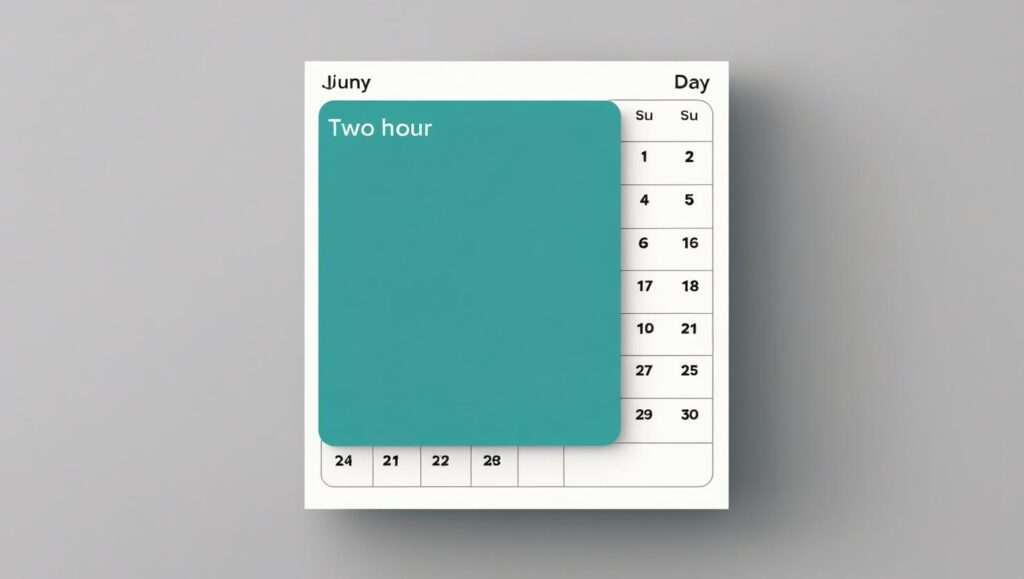💬 Introduction: You’re Not Lazy—You’re Distracted
Every time you sit down to work, something pulls you away—your phone buzzes, your email refreshes, or your mind just drifts. Sound familiar?
In a world where attention is the most valuable currency, focus is your greatest competitive edge. But how do you actually build it?
Enter: The 2-Hour Rule—a simple but powerful method that’s helped creatives, entrepreneurs, and thinkers carve out time for their most meaningful work.
This post dives deep into what the 2-hour rule is, why it works, and how to use it to finally get stuff done.
⏱️ What is the 2-Hour Rule?
The 2-hour rule is a productivity concept built on one idea:
Spend your most focused 2 hours each day on high-impact, deep work.
It’s based on research that most people have a natural 2-hour window where their energy, attention, and creativity peak. Instead of spreading your energy thin across 8+ hours, you concentrate it in this zone.
This idea gained traction from authors like Cal Newport (Deep Work).
🧠 Why It Works: The Science Behind Focus
The human brain is not wired for constant context switching. Every time you jump from a task to a notification, your brain loses momentum.
The 2-hour rule forces you to:
- Prioritize deep, focused work
- Eliminate distractions
- Create a rhythm of intense productivity followed by rest
It mimics the cognitive strategies of high performers—like writers, CEOs, coders, and designers—who don’t work more, they work with intensity in short bursts.
🔍 How to Find Your 2-Hour Window

Everyone’s “focus peak” is different. Here’s how to find yours:
- Track your energy: For one week, note when you feel most alert, clear, and creative.
- Identify distractions: What time are you least interrupted?
- Test & reflect: Try deep work in different 2-hour blocks and notice which ones produce the best results.
For many, it’s early morning (7–9 AM) or late morning (10 AM–12 PM). For others, it might be late at night. There’s no universal time—only your time.
⚙️ How to Use the 2-Hour Rule
Step 1: Schedule It Like a Meeting
Block your 2 hours in your calendar. Make it non-negotiable.
📌 Example: “Deep Work Block – 8:00 AM to 10:00 AM”
Step 2: Eliminate Distractions
- Turn off notifications
- Close unnecessary tabs
- Use a tool like Cold Turkey or Freedom to block distractions
Step 3: Pick One High-Impact Task
Work on something meaningful:
- Writing a blog post
- Coding a feature
- Outlining a business plan
- Studying a difficult concept
This is not time for emails or Slack messages.
Step 4: Protect It Fiercely
Tell people you’re unavailable. Wear noise-canceling headphones. Put a sticky note on your door if needed. You’re not being rude—you’re building your future.
💡 What to Work On During Your 2 Hours
Use this time for “deep work”, not busywork. Think:
- Strategic thinking
- Creative writing
- Problem solving
- Long-term planning
- Learning a difficult skill
Avoid:
- Meetings
- Notifications
- Social media
- Admin tasks
Need help defining what’s “high impact”? Try the Eisenhower Matrix method to prioritize what truly matters.
🧩 What Happens to the Rest of the Day?
You still have 6+ hours left in your day. Use those for:
- Admin tasks
- Reactive work (emails, calls)
- Collaboration
- Breaks and recovery
The beauty of the 2-hour rule is:
You’ve already accomplished your most valuable work. Everything else is a bonus.
📉 The Cost of Not Using It

When you don’t protect your best hours, your day gets consumed by:
- Constant interruptions
- Low-value tasks
- Multitasking
- Decision fatigue
This leads to burnout, stagnation, and the feeling of “working all day but accomplishing nothing.”
Don’t mistake motion for progress. The 2-hour rule is about real progress.
Want to build your entire day around peak focus hours?
👉 Start with this guide on how time blocking can reshape your life.
🌍 Real-World Examples
Many high achievers swear by intense, time-blocked focus periods that mirror the 2-hour rule. Here are a few inspiring examples:
Maya Angelou, the legendary poet and author, rented a small hotel room where she’d write from 7 AM to 10 AM every day—her sacred, uninterrupted writing block.
Cal Newport, author of Deep Work, schedules 1–2 hour deep work blocks into his calendar daily to protect focus and produce high-quality output—proving the 2-hour rule isn’t just theory, but a lifestyle.
Nikola Tesla, the pioneering inventor, was known to work in highly focused mental sprints—often isolating himself for hours to dive deep into a single problem or concept.
These individuals don’t try to stretch productivity over 10 chaotic hours. They use the 2-hour rule to dive deep, think clearly, and work with deliberate intention.
The pattern is clear: focused, protected time beats busy multitasking—every time.
🧘 What If You Can’t Spare 2 Full Hours?

Start with:
- 25-minute Pomodoro sessions
- One focused hour daily
- Splitting into two 1-hour blocks
The key is consistency over perfection.
🔥 Final Thoughts: The 2-Hour Rule Is a Game-Changer
Productivity isn’t about working more—it’s about working smart.
The 2-hour rule helps you reclaim your most precious resource: your attention.
When used consistently, this one shift can elevate your results, reduce stress, and help you create instead of just reacting.
You don’t need to hustle for 10 hours a day.
You just need to focus for two.
